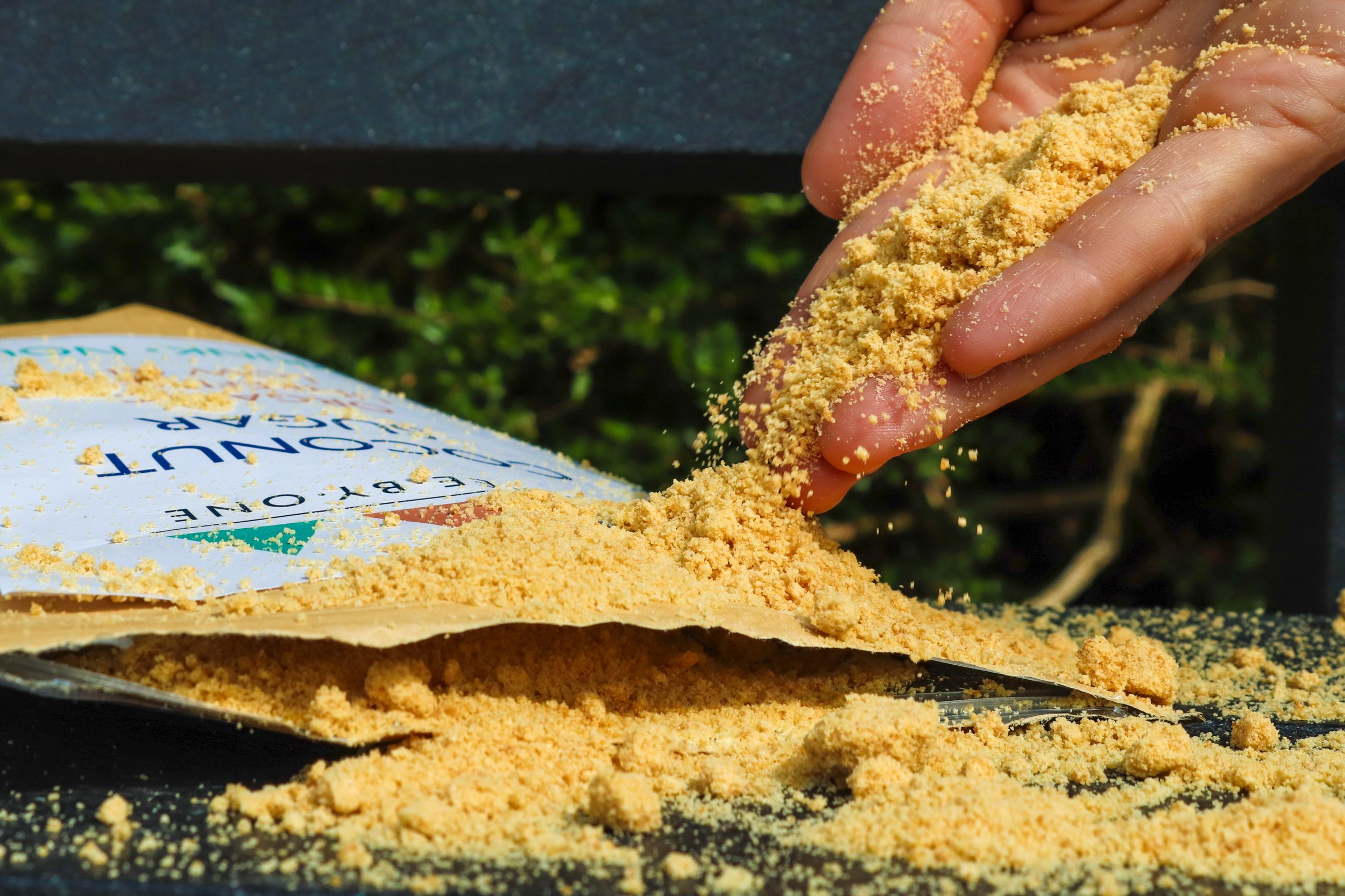Coconut Sugar: All You Need To Know
When you think about coconut, you automatically think of the hard, hairy drupe, the coconut. But coconut trees have an other useful source of food products, namely the sap.
Coconut Sugar is actually made from the sap of the coconut flower blossom.
Coconut trees have a continuous cycle of flowering and producing fruit. We take advantage of this cycle to collect the naturally produced sap when a flower buds. This is done by making a cut in the flower blossom, putting a ‘tap’ in it, and collecting the dripping sap. This sap becomes our Coconut Nectar and Coconut Sugar.
Sap is responsibly harvested every 12 hours from the coconut blossoms by Wijesinghe and his community who have been collecting sap for generations.
Once the sap has been tapped and gently heated it becomes the deeply sweet amber coloured coconut nectar. This nectar is then taken to an ISO certified facility where it is dried out to create our lightly golden Coconut Sugar before being packed and shipped to us in Belgium.
The ethics of coconut sugar
The majority of coconut sugar on the market comes from Indonesia and very few brands are transparent about the provenance, ethical relationships and environmental practices around the production of this sugar.
Of course the flowering of the coconut tree & the creation of sap is vital to a tree’s ability to bear fruit, so it is extremely important that sap is collected in a responsible way, taking only enough that the tree is not damaged, meaning it is still able to bear fruit.
We are hugely invested in transparent and ethical supply chains, both on a human and environmental level. That is why we chose to work exclusively with producers we have a relationship with, who follow the same ethos and good practices. And of course the entire supply chain is certified organic.
What does coconut sugar taste like?
Coconut sugar looks similar to regular brown sugar although is more golden in tone and has a subtle caramel flavour. It doesn’t taste of coconut!
It is of similar sweetness to regular sugar so can easily replace any other sugar in any of your recipes using the exact same quantity.
Cane sugar vs coconut sugar
“Normal” cane sugar and coconut sugar are very different products, even though they can be used similarly.
Cane sugar comes from the water inside the sugarcane plant and is highly mass-produced and processed.
In the production of coconut sugar, the farmers only need to heat the sap enough to evaporate the moisture and create first nectar, and then sugar granules. This low level heating means the final product is minimally processed. It can still be considered as a raw product due to it not being subjected to any high termperature processing. With cane sugar the liquid sap needs to be heated at a much higher temperature for crystals to form. It is also then refined, adding chemicals, to create white sugar we’re familiar with.
This minimal processing means that coconut sugar retains some of the nutrients from the coconut palm itself. Cane sugar on the other hand is nutrient deficient, the definition of ‘empty calories’.
Feel free to do your research into the benefits of coconut sugar.
Our organic coconut sugar doesn’t use pesticides, growth regulators, fertilisers, irradiation or GMOs.
Switching to coconut sugar
If after reading this, you like the sound of coconut sugar, then give it a go!. Buy some, use it in your coffee, your baking, in whatever recipes you like, and let me know in the comments how you get on.
☮️💛🥥△△△





